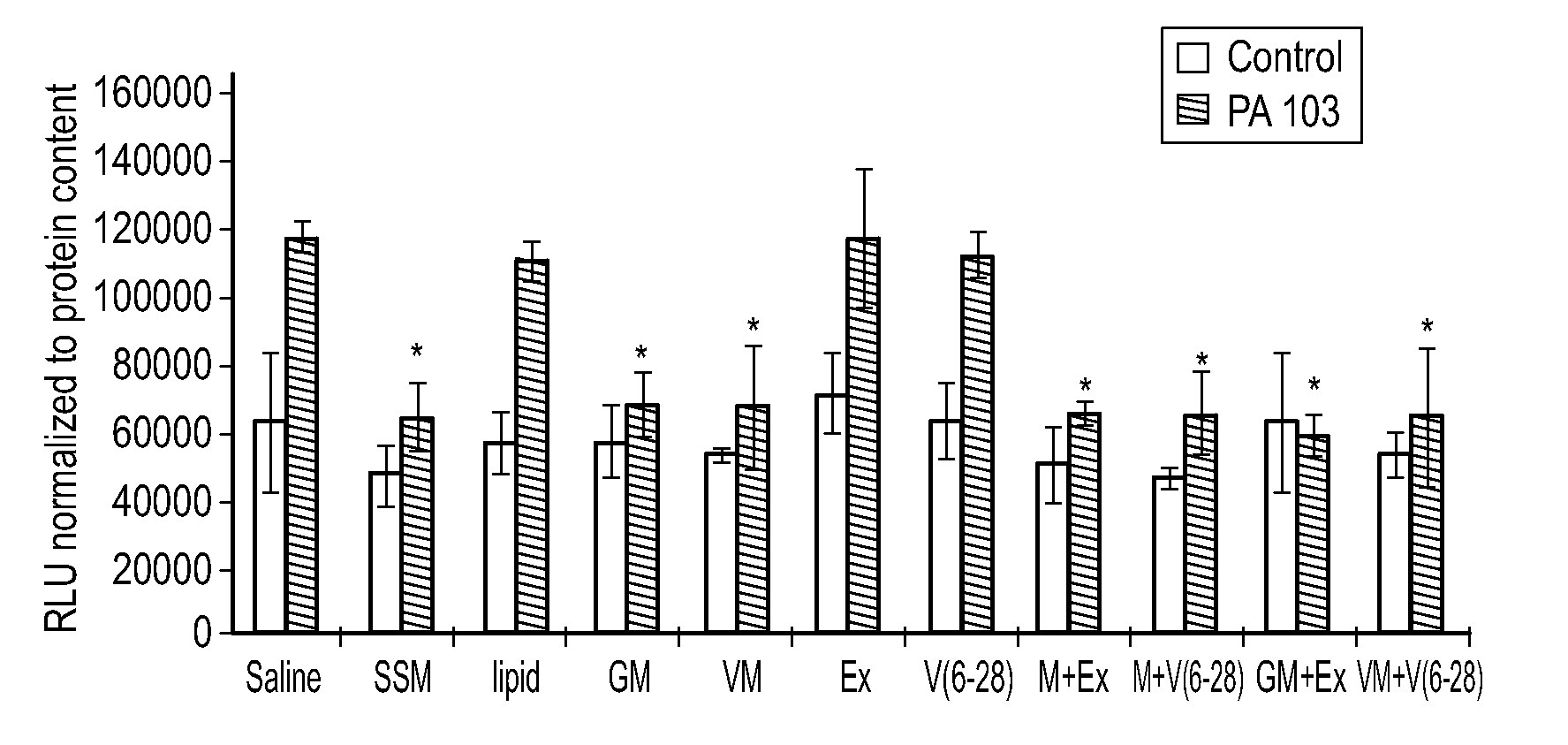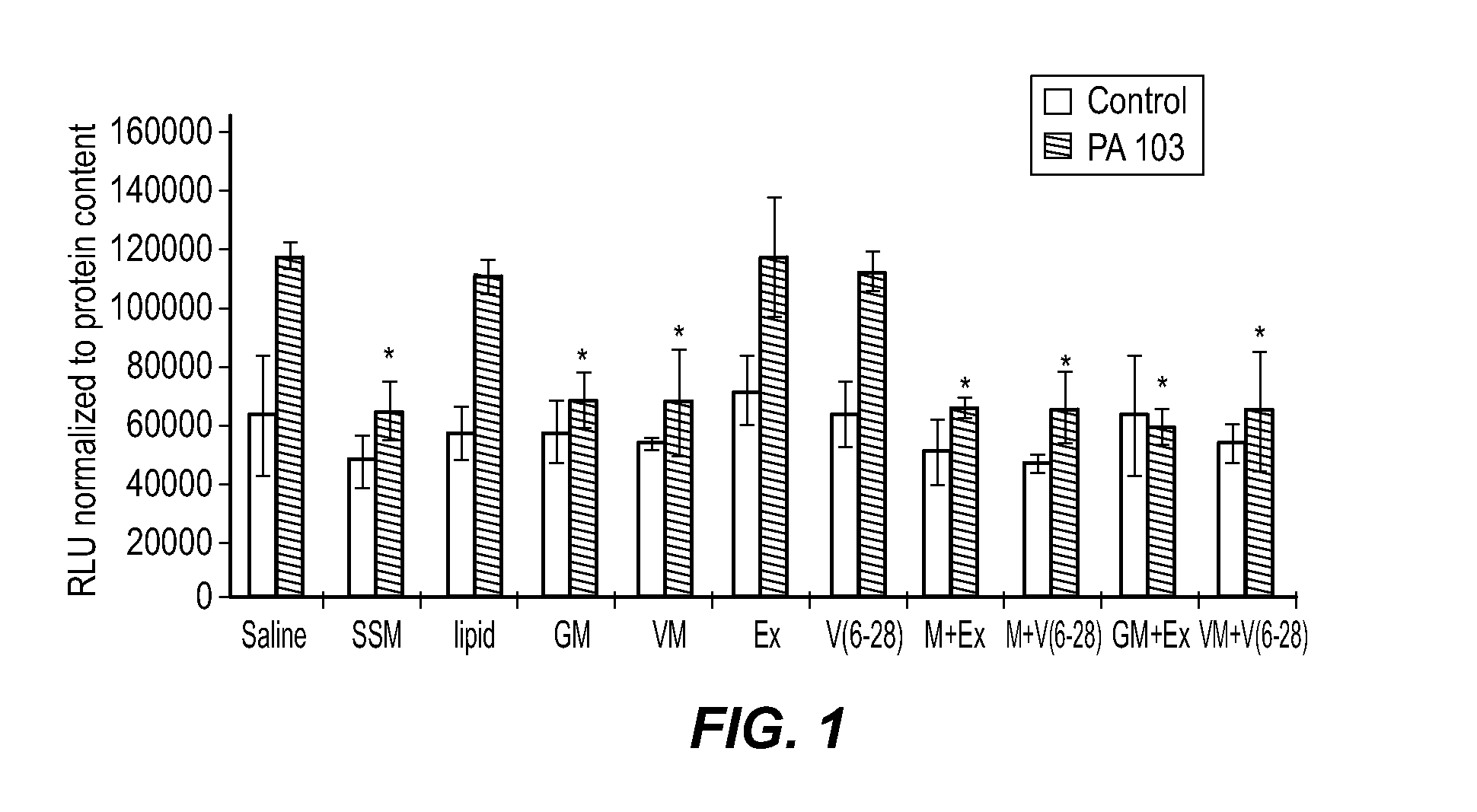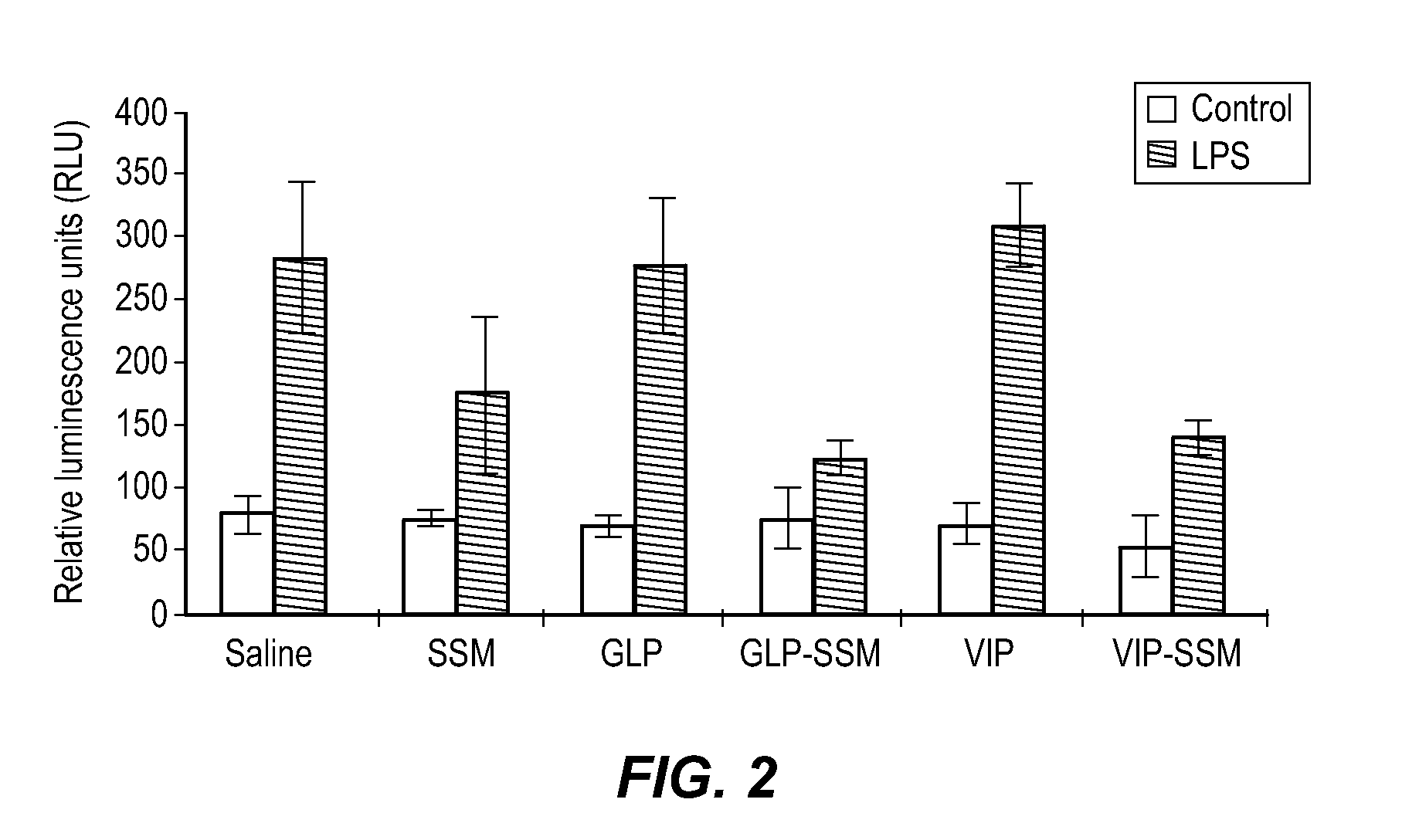Phospholipid micellar and liposomal compositions and uses thereof
a technology of phospholipid micellar and liposomes, which is applied in the direction of drug compositions, immunological disorders, metabolism disorders, etc., can solve the problems of reducing the toxicity or injury of the agent, and achieve the effects of increasing stability, reducing toxicity or injury, and increasing solubility
- Summary
- Abstract
- Description
- Claims
- Application Information
AI Technical Summary
Benefits of technology
Problems solved by technology
Method used
Image
Examples
example 1
Sterically Stabilized Micelles Suppress the Bacterial-Induced Inflammatory Response on Macrophages
[0113]It was previously determined that when murine macrophages were treated with SSM, the resulting inflammatory response induced by Pseudomonas aeruginosa (P. aeruginosa strain PA103) was significantly lower than the inflammatory response in saline-treated cells. The same anti-inflammatory effect was observed for murine macrophages (RAW 246.7 cells) treated with GLP-SSM or VIP-SSM. GLP-1 and VIP were used in the experiments because they act as immunomodulators in that they suppress excessive inflammation and abnormal immune responses while at the same time promote cell and tissue repair mechanisms (Hahm et al., J. Endocrinol. Invest. 31: 334-340, 2008; Iwai et al., Neurosci. Res. 55: 352-360, 2006). VIP is an endogenous anti-inflammatory mediator, which has been speculated to extend the range of therapeutic treatments available for various disorders, including acute and chronic inflam...
example 2
Sterically Stabilized Micelles Reduce or Inhibit Endotoxin-Induced Activation of NF-κB in Macrophages
[0127]Host responses that occur during infection can be reproduced by administration of bacterial fragments, the most extensively studied of which is endotoxin (LPS) from Gram-negative bacteria. Lipopolysachamide (LPS), which is found in the circulation during sepsis, induces cytokine release, hypotension, and death. LPS also induces the metabolic responses seen during infection. To determine if sterically stabilized phospholipids micelles attenuate endotoxin-induced activation of pro-inflammatory mediators, the following experiment was carried out.
[0128]Bone marrow-derived macrophages (BMDM) from a primary macrophage cell line, extracted from mice transfected with a nuclear factor-kappa B (NF-κB)-driven luciferase reporter plasmid, were used in these experiments. In this cell line, the expression of NF-κB (a proinflammatory mediator) induces the expression of a luciferase gene in a ...
example 3
Sterically Stabilized Micelles Attenuate Endotoxin-Induced Activation of NF-κB in Macrophages
[0134]Host responses that occur during infection can be reproduced by administration of bacterial fragments, the most extensively studied of which is endotoxin (LPS) from Gram-negative bacteria. LPS, which is found in the circulation during sepsis, induces cytokine release, hypotension, and death. LPS also induces the metabolic responses seen during infection. Lipoteichoic acid (LTA), a heat-stable component of the cell membrane and wall of most Gram-positive bacteria, has structural and functional similarities to LPS. Furthermore, LTA induces circulatory shock and treatment of macrophages or adherent mononuclear cells with LTA has been shown to induce cytokine mediators of septic shock (Bhakdi et al., Infect. Immun. 59:4614-4620, 1991). To further determine the effect that sterically stabilized micelles have on endotoxin, such as LPS and LTA, experiments are carried out with SSM, with and w...
PUM
| Property | Measurement | Unit |
|---|---|---|
| temperatures | aaaaa | aaaaa |
| temperatures | aaaaa | aaaaa |
| particle size distribution | aaaaa | aaaaa |
Abstract
Description
Claims
Application Information
 Login to View More
Login to View More - R&D
- Intellectual Property
- Life Sciences
- Materials
- Tech Scout
- Unparalleled Data Quality
- Higher Quality Content
- 60% Fewer Hallucinations
Browse by: Latest US Patents, China's latest patents, Technical Efficacy Thesaurus, Application Domain, Technology Topic, Popular Technical Reports.
© 2025 PatSnap. All rights reserved.Legal|Privacy policy|Modern Slavery Act Transparency Statement|Sitemap|About US| Contact US: help@patsnap.com



